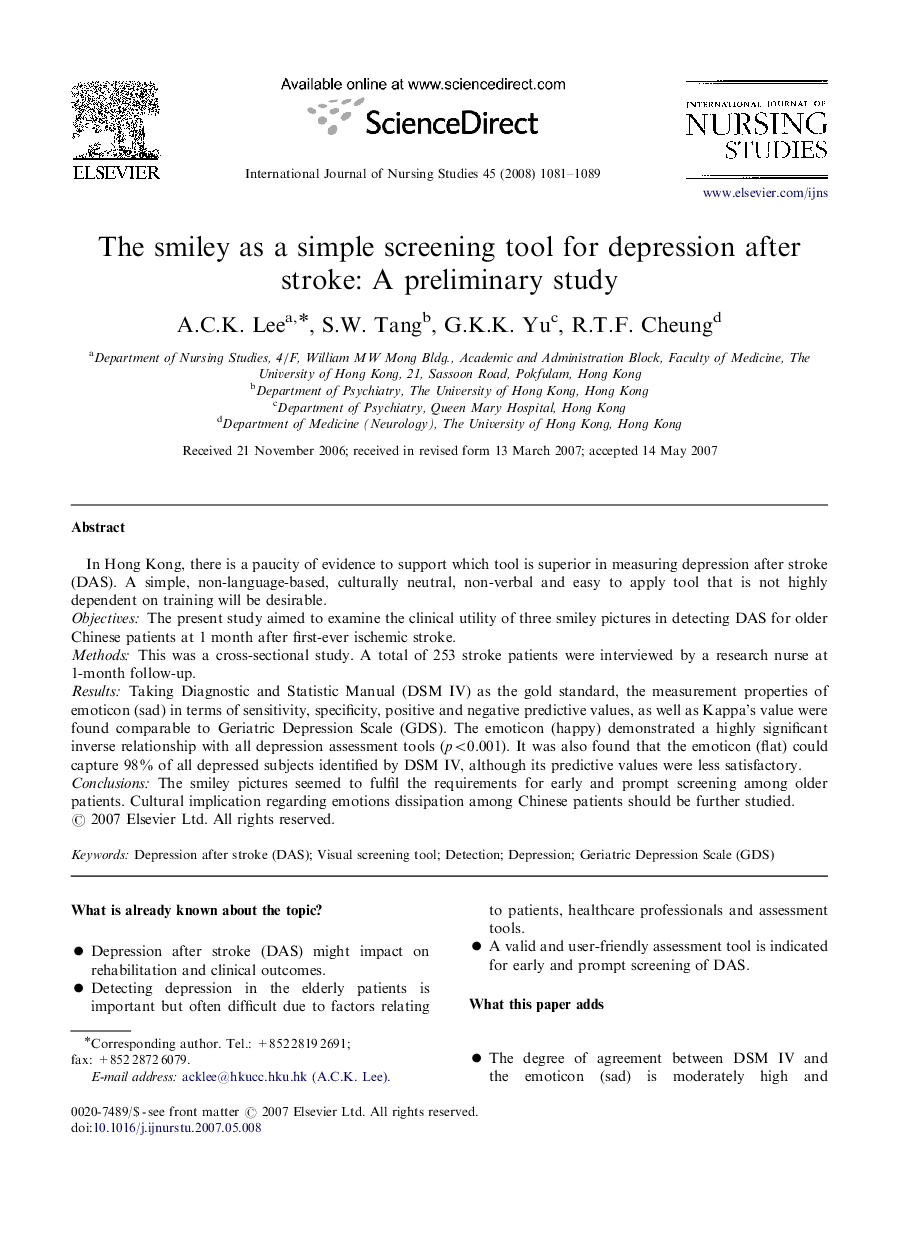| Article ID | Journal | Published Year | Pages | File Type |
|---|---|---|---|---|
| 1077796 | International Journal of Nursing Studies | 2008 | 9 Pages |
In Hong Kong, there is a paucity of evidence to support which tool is superior in measuring depression after stroke (DAS). A simple, non-language-based, culturally neutral, non-verbal and easy to apply tool that is not highly dependent on training will be desirable.ObjectivesThe present study aimed to examine the clinical utility of three smiley pictures in detecting DAS for older Chinese patients at 1 month after first-ever ischemic stroke.MethodsThis was a cross-sectional study. A total of 253 stroke patients were interviewed by a research nurse at 1-month follow-up.ResultsTaking Diagnostic and Statistic Manual (DSM IV) as the gold standard, the measurement properties of emoticon (sad) in terms of sensitivity, specificity, positive and negative predictive values, as well as Kappa's value were found comparable to Geriatric Depression Scale (GDS). The emoticon (happy) demonstrated a highly significant inverse relationship with all depression assessment tools (p<0.001). It was also found that the emoticon (flat) could capture 98% of all depressed subjects identified by DSM IV, although its predictive values were less satisfactory.ConclusionsThe smiley pictures seemed to fulfil the requirements for early and prompt screening among older patients. Cultural implication regarding emotions dissipation among Chinese patients should be further studied.
